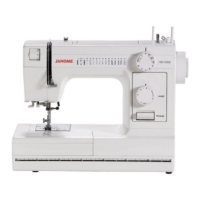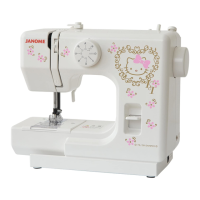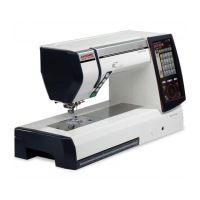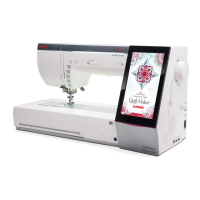1.5
2.5
4
2 - 6
2
3.5 5
2 - 5
Raise the needle above the fabric.
Turn the dial to select the desired
pattern.
Note: Do not turn the dial when the
needle is down in the fabric,
otherwise the needle and fabric
could be damaged.
Press the reverse button to sew in reverse.
Machine Setting
Stitch
Thread Tension Dial
Starting to sew:
Raise the presser foot and position the fabric next to a
stitching guide line on the needle plate.
Lower the needle into the fabric.
Lower the presser foot and smooth the threads toward the
back.
Dpress the foot control.
To fasten the beginning of the seam, press the reverse
button and sew several reverse stitches.
To change sewing direction
Stop the machine and turn the
handwheel toward you to bring the
needle down into the fabric.
Raise the presser foot.
Pivot the fabric aroumd the needle to
change sewing direction as shown.
Finishing sewing
To fasten seam ends, press the
reverse button and sew several
stitches in reverse.
Raise the presser foot and
remove the fabric, draw the
threads to the back.
Cut the threads with the groove on
the back of the presser bar as
shown.
Machine setting
Stitch
Thread tension dial
The zigzag stitch is
used to prevent
fabrics from fraying at
the raw edges.
Thread tension for zigzag sewing
To obtain better zigzag stitches, the
needle thread tension should be
slightly weaker than straight stitch.
The needle thread appears slightly
on the wrong side of the fabric.
15. Selecting Stitch
16. Reverse Button
17. Straight Stitch Sewing
18. Zigzag Stitch Sewing
It can also be used for appliques, cut works
and as a decorative stitch.

